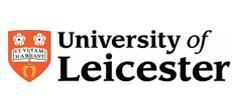Genomics
In this topic students need to appreciate the concept of the genome as the complete set of genetic instructions in a cell and that this will therefore determine the full range of proteins that a cell is able to produce.
Sequencing projects have now read the genomes of organisms ranging from microbes to plants to humans. This allows the proteins that will be derived from the genetic code to be predicted. This has also led to the realisation that in more complex organisms there is non-coding DNA and also regulatory proteins. This further complicates the picture of what amino acid sequence and consequently what proteins are or are not produced by a particular cell.
Students need to understand that the genome is regulated by a number of factors. Cells are able to control their metabolic activities by regulating the transcription and translation activities of their genome. Although all cells within an organism carry the same genetic code, they translate only part of it. Both external and internal factors can control gene expression, with epigenetic regulation of transcription being increasingly recognised as an important factor.
Whilst this list provides a source of information and ideas for experimental work, it is important to note that recommendations can date very quickly. Do NOT follow suggestions which conflict with current advice from CLEAPSS, SSERC or other recent safety guides. eLibrary users are responsible for ensuring that any activity, including practical work, which they carry out is consistent with current regulations related to Health and Safety and that they carry an appropriate risk assessment. Further information is provided in our Health and Safety guidance.
Genomics, Decision-Making and Risk
In this video, from Teachers TV, a group of the UK's leading experts in genetics, medics and bioethics discuss some of the ethical and social issues in modern genomic research.
The video is five and a half minutes long only, but deals with a number of social and ethical issues successfully.
The video could be used to stimulate discussion with students on this issue. Students could watch the video, be given a discussion question and then asked to debate that question in a similar way to the video. It may be possible to video each group and then play these videos in class. This would work well if each group had a slightly different question/issue to debate.
The Other Genome Project *suitable for home teaching*
This Catalyst article details how the genome of a plant called Arabidopsis has been unravelled so that this species can act as a model in genetic studies.
The article contains a suitable level of understanding and challenge for A level students as well as some possibilities for undertaking further internet based research.
It would be possible to write some challenging questions linked to this article on sequencing of genomes, as well as directing students to complete some additional research. In this way the article would probably work best as an activity set for homework or independent self directed study.
KRAS: Cancer Mutation Activity
These materials contain a range of activities where students use real genomic data from the Cancer Genome Project at the Wellcome Trust Sanger Institute to find mutations in a gene associated with pancreatic cancer.
DNA, genes and chromosomes
A collection of resources covering DNA, genes and chromosomes.
GENIE jumping genes
The aim of this activity is for students to use tiddlywinks to represent sections of jumping genes, which they then flick onto a poster which is representative of a section of the human genome. Where their "gene" lands either will or will not disrupt the gene and may then cause disease. An accompanying PowerPoint presentation is used for students to look up the gene on which their jumping gene has landed and information is provided about what cause (if any) this will have.
What this activity will demonstrate is:
- That our genomes are not static
- How disrupting a genome effects us and what diseases are caused as a result
- That this is a common event in plant genomes




